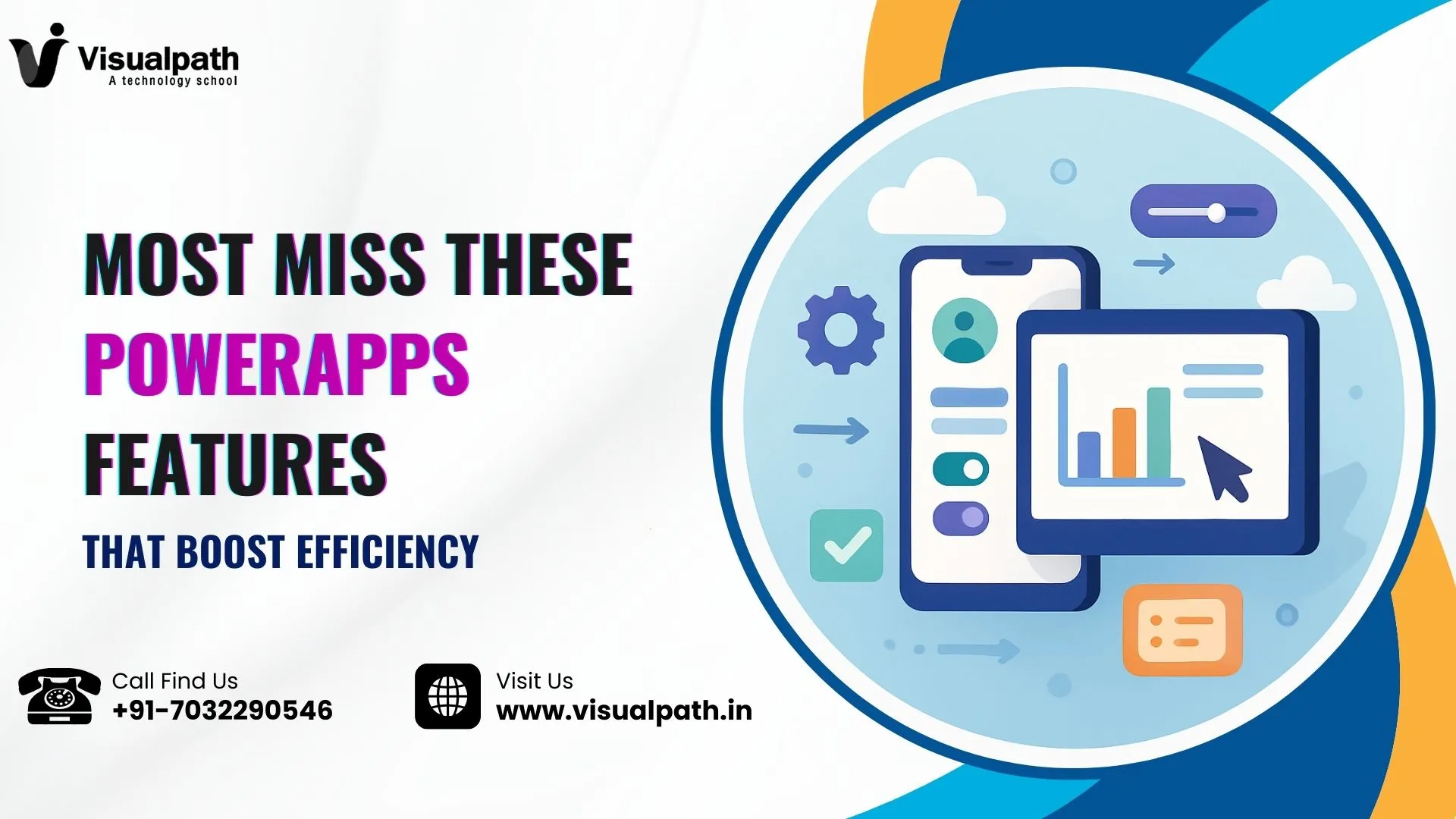As someone who works hands-on with PowerApps nearly every day, I’m constantly amazed by the hidden gems this platform offers. While many users know the basics, there are several PowerApps features that often go unnoticed — yet they can significantly improve productivity and streamline business processes. Whether you’re building apps for internal teams or automating repetitive tasks, tapping into these underused tools can save you hours of time and tons of effort.
In this blog, I’m going to share the PowerApps features that I’ve personally used to speed up workflows, simplify development, and make my solutions more powerful — all using simple steps and without needing to write tons of code. PowerApps Training
1. The Magic of Components
One of the most underrated PowerApps features is components. Components are like reusable blocks that you can drag and drop into any app. Instead of creating the same buttons, headers, or notification panels again and again, I just make one component and reuse it across all my apps. It’s a massive time saver and keeps everything consistent.
When you’re building multiple screens, this feature alone can cut development time in half. It’s one of those things you wish you knew earlier — I definitely did. Power Automate Online Training
2. Using Collections for Smarter Data Management
At first, I didn’t quite understand collections, but now I can’t live without them. They let you store and manipulate temporary data within your app, which is incredibly useful when working offline or managing local user sessions. I use collections to group form data before submitting it, or to filter results based on user roles. Once you start using them, you’ll realize how essential they are for building advanced logic inside your app.
This is also where Microsoft PowerApps truly shines — it gives you the flexibility to handle data with ease even if you aren’t a hard-core developer.
3. PowerApps Templates for Fast Prototyping
I used to spend hours building apps from scratch until I explored PowerApps templates. These ready-made layouts cover everything from leave request forms to expense trackers. When you’re short on time or need inspiration, templates offer a strong starting point. You can customize them based on your needs, which I find useful when clients want quick mock-ups or MVPs.
Using templates helps you understand app logic better too. I often learn from how templates are structured and reuse their formulas in my own custom apps.
4. Optimize with Performance Analyzer
Ever wonder why your app is slow? The Performance Analyzer tool within PowerApps is one of the most helpful (and hidden) PowerApps features. It gives you a detailed breakdown of which formulas, screens, or connectors are slowing things down. I discovered a few unnecessary data calls in one of my apps using this, and after fixing them, the app loaded twice as fast.
This tool is especially important if you’re aiming for better user experience in apps with many data sources or complex navigation.
5. PowerApps Integration with Other Tools
PowerApps works seamlessly with Microsoft tools like SharePoint, Excel, Teams, and Outlook — but many forget just how deep PowerApps integration can go. I built a travel approval app that sends Teams messages and Outlook notifications automatically. I also use it to pull data from Excel on OneDrive, all without needing an external database.
This is where PowerApps becomes a true business process automation tool — because it talks to everything, you don’t need to switch between apps. I’ve seen businesses save thousands of dollars by replacing third-party tools with one smart PowerApp.
6. Embrace Low Code, Think Big
The idea of low code development was new to me at first. But PowerApps made it clear: you don’t need to be a pro developer to build amazing business apps. With just basic logic and simple formulas, I’ve created apps that are now used by multiple departments.
What surprised me is how scalable PowerApps apps can be. Even with minimal coding, I’ve built apps that handle real-time updates, approval workflows, and custom dashboards — all thanks to PowerApps’ flexibility.
7. Using Power Platform Tools Together
If you’re only using PowerApps, you’re missing out on the full strength of Power Platform tools. Combine PowerApps with Power Automate and Power BI and the magic really happens. I created a dashboard where users submit data via a PowerApp, it’s processed by a Power Automate flow, and results are visualized in Power BI.
By combining tools, you unlock enterprise-grade solutions with minimal cost and effort. That’s the power of the platform — everything works together beautifully.
Final Thoughts
I’ve learned through experience that it’s not just about knowing PowerApps — it’s about knowing the PowerApps features that make your job easier. From reusable components to built-in integration, there’s so much power hiding in plain sight.
If you’ve been using PowerApps only for basic forms or data collection, I encourage you to explore more. These tools are designed to empower non-developers like us to build incredible apps that truly solve business problems.
Try out a new feature today and see how it boosts your workflow. And if you discover something cool, share it — we’re all in this learning journey together.
Trending Courses: Microsoft Dynamics 365 Business Central, Dynamics CRM, Generative AI
Visualpath stands out as the leading and best institute for software online training in Hyderabad. We provide PowerApps and Power Automate Training. You will get the best course at an affordable cost.
Call/What’s App – +91-7032290546
Visit: https://visualpath.in/microsoft-powerapps-training.html




